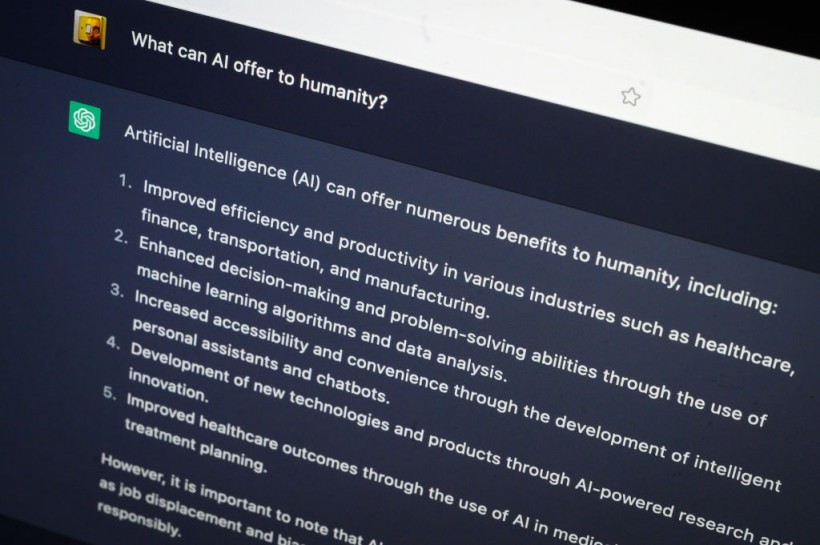Researchers at the University of Kansas have unveiled an AI text detector capable of distinguishing between human-written and AI-generated content in scientific papers with astonishing accuracy.
Published in Cell Reports Physical Science, the study, led by Professor Heather Desaire, addresses the growing concern in academia surrounding the infiltration of AI-generated essays into scientific research.

LONDON, ENGLAND - FEBRUARY 03: In this photo illustration, the OpenAI "ChatGPT" AI-generated answer to the question "What can AI offer to humanity?" is seen on a laptop screen on February 03, 2023 in London, England. OpenAI, whose online chatbot ChatGPT made waves when it was debuted in December, announced this week that a commercial version of the service, called ChatGPT Plus, would soon be available to users in the United States.
Is It Possible to Detect AI-Written Texts?
This innovative AI text detector could not have come at a better time. With AI-generated content on the rise, academic publishers face the challenge of ensuring the integrity of their journals.
While there are existing AI detectors for general content, none have been particularly effective when applied to the highly specialized field of scientific papers. In fact, mathematical proof suggests that it may be nearly impossible to detect if an AI model like ChatGPT generated a piece of text.
Spotting AI Generated-Texts
TechXplore reports that Professor Desaire and her team set their sights on chemistry, meticulously fine-tuning their AI text detector to achieve the highest level of precision.
The detector was trained using a dataset of introductory passages from journals published by the American Chemical Society, a gold standard in the field. It then underwent rigorous testing, assessing its ability to differentiate between human and AI-generated content.
The results are nothing short of astounding. When the AI detector scanned three categories of reports, it correctly identified human-authored passages 100% of the time, even when reports were generated from prompts based solely on report titles. The accuracy remained remarkable when reports relied on introductory passages, with correct identification at an impressive 98%.
Read Also: Google Unveils AI-Powered Ad Creation Tools for Agencies, Businesses
Better Than ZeroGPT, OpenAI
To put this achievement into perspective, competing classifiers, including ZeroGPT and OpenAI, fell far short when applied to chemistry-related reports.
ZeroGPT achieved an average accuracy of only 37% when dealing with reports based on titles and only slightly better when working with introductory text. OpenAI fared even worse, correctly identifying authorship only 80% of the time.
Professor Desaire expressed the urgency of this development, saying, "Academic publishers are grappling with the rapid and pervasive adoption of new artificial intelligence text generators. This new detector will allow the scientific community to assess the infiltration of ChatGPT into chemistry journals, identify the consequences of its use, and rapidly introduce mitigation strategies when problems arise."
What's Next?
The implications of AI-generated content in scientific journals are far-reaching and concerning.
Professor Desaire pointed out several issues, including the potential flood of marginally valuable manuscripts, the risk of over-representing highly cited papers, and creating false information.
However, amidst these challenges, Professor Desaire remains optimistic. She noted that some believe resistance to the emergence of AI-generated content is futile, calling it an "arms race" that humans may not win. Instead, she proposes that editors should take the lead in detecting AI contamination.
The study's significance goes beyond chemistry journals. It addresses the broader concern of AI-generated content infiltrating scientific literature.
Stay posted here at Tech Times.
Related Article: AI Marketing in 2023: Unleashing the Power of Innovation









